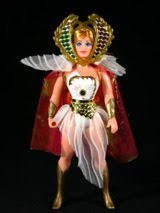
Oh, I never knew what a powerful message this book held until NOW! I read the book in elementary school (sixth grade) and honestly I couldn't remember any of it. It was an entirely new experience.
What a grim existence Jonas must have lead, knowing that he had all of the feelings, memories, and emotions of "The Past," and at the same time that he could not share any of it because he was among a community of ignorance - conformed-against-their-will "NON-THINKERS!" As the Giver told Jonas, "They know nothing." And it was true.
"Ignorance?" Isn't it our job as teachers to "ward off ignorance?" To inform, educate, and enlighten? I think that this book speaks directly to teachers - and perhaps even more so than it does to students - because it reiterates the power of education and acquisition of knowledge as a deterrent against "ignorance."
This novel is wonderfully well written, and kept me thinking the entire way through. It made me realize that no matter how hopelessly desperate it may seem to work as an agent of change (whether in a closed-minded, conformist, even cult-like community as in Lowry's novel, the classroom, the district, school board, or whatever...), there's always hope if you are willing to sacrifice enough of yourself for the better of the group. Take risks, learn, gain wisdom, don't stagnate, and NEVER resort to SAMENESS.








